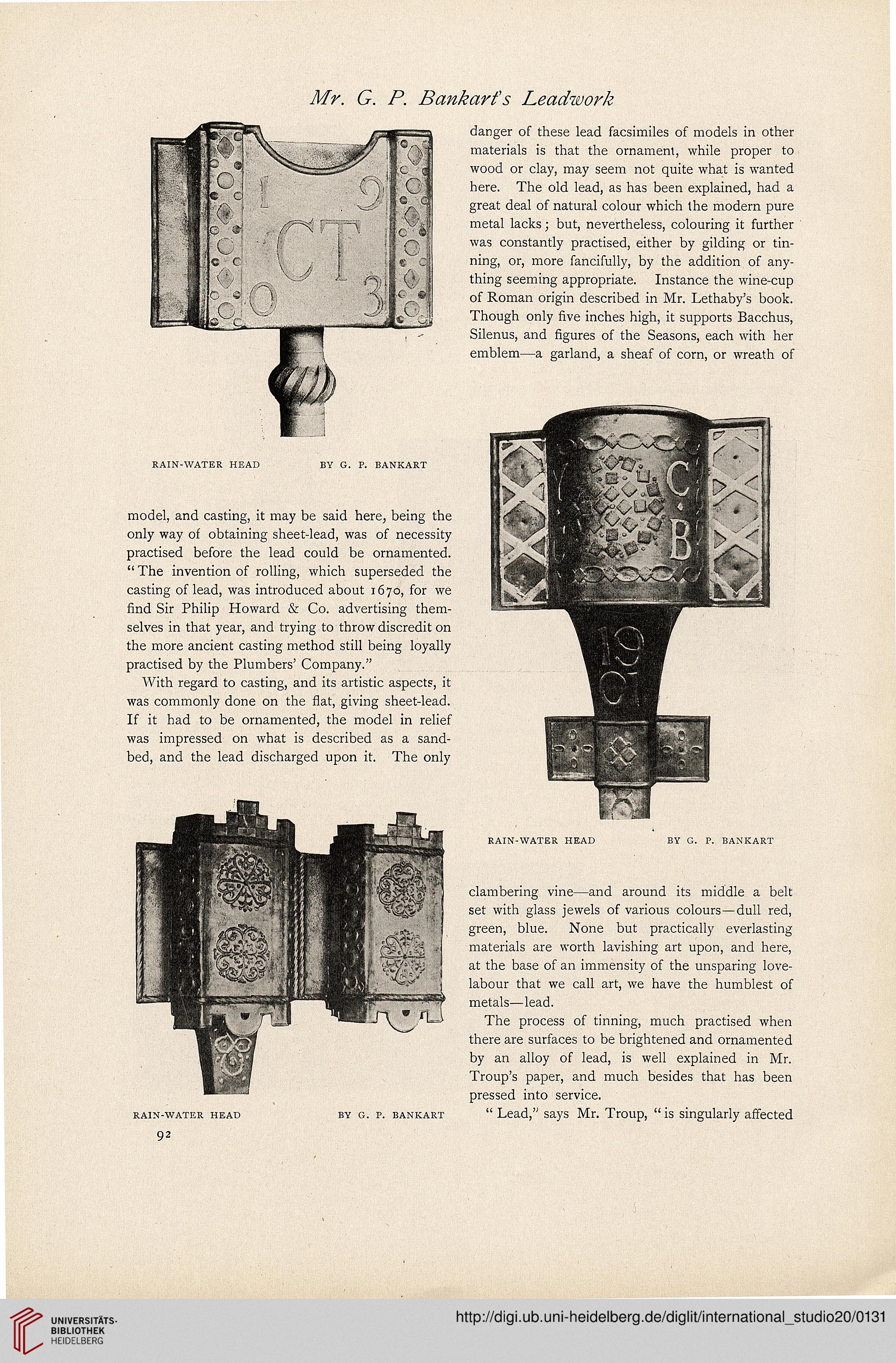RAIN-WATER HEAD BY G. F. BANKART
model, and casting, it may be said here, being the
only way of obtaining sheet-lead, was of necessity
practised before the lead could be ornamented.
" The invention of rolling, which superseded the
casting of lead, was introduced about 1670, for we
find Sir Philip Howard & Co. advertising them-
selves in that year, and trying to throw discredit on
the more ancient casting method still being loyally
practised by the Plumbers' Company."
With regard to casting, and its artistic aspects, it
was commonly done on the flat, giving sheet-lead.
If it had to be ornamented, the model in relief
was impressed on what is described as a sand-
bed, and the lead discharged upon it. The only
danger of these lead facsimiles of models in other
materials is that the ornament, while proper to
wood or clay, may seem not quite what is wanted
here. The old lead, as has been explained, had a
great deal of natural colour which the modern pure
metal lacks; but, nevertheless, colouring it further
was constantly practised, either by gilding or tin-
ning, or, more fancifully, by the addition of any-
thing seeming appropriate. Instance the wine-cup
of Roman origin described in Mr. Lethaby's book.
Though only five inches high, it supports Bacchus,
Silenus, and figures of the Seasons, each with her
emblem—a garland, a sheaf of corn, or wreath of
RAIN-WATER HEAD BY G. F. BANKART
clambering vine—and around its middle a belt
set with glass jewels of various colours—dull red,
green, blue. None but practically everlasting
materials are worth lavishing art upon, and here,
at the base of an immensity of the unsparing love-
labour that we call art, we have the humblest of
metals—lead.
The process of tinning, much practised when
there are surfaces to be brightened and ornamented
by an alloy of lead, is well explained in Mr.
Troup's paper, and much besides that has been
pressed into service.
" Lead," says Mr. Troup, "is singularly affected




